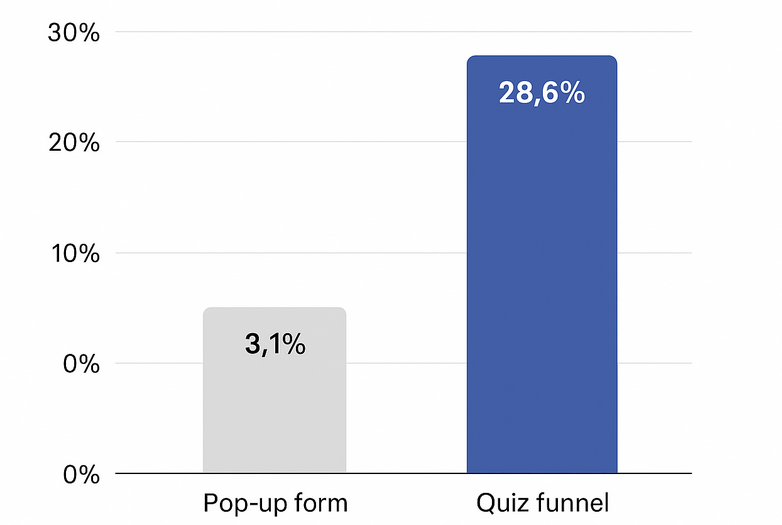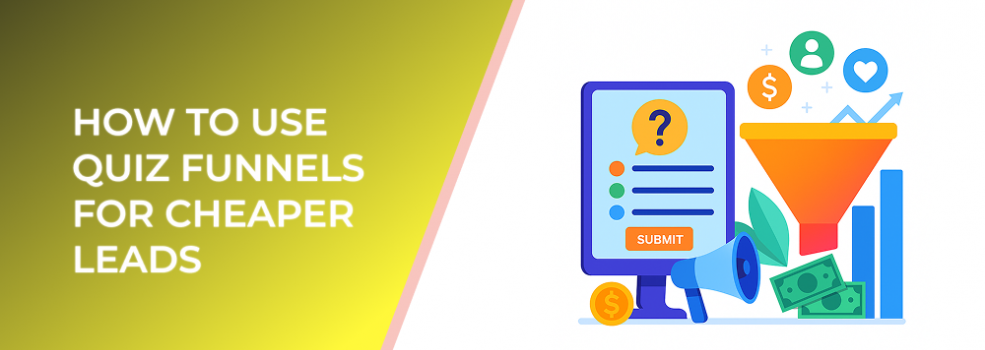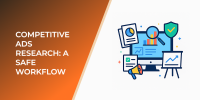Quiz funnels have become one of the most efficient ways to acquire leads at a lower cost while improving quality. Instead of sending cold traffic directly to a form, a quiz creates an interactive path that captures attention, boosts engagement, and warms users before they convert. As a result, advertisers experience cheaper CPLs and higher conversion rates throughout their funnels.
Below is a complete breakdown of how quiz funnels work, why they are cost‑effective, and how to create one that consistently delivers.
Why Quiz Funnels Lower Lead Costs
1. Higher Engagement = Lower Drop‑Off

Lead generation conversion rate: Quiz funnels (28.6%) vs. pop-up forms (3.1%) – quizzes are 9.3× more effective
Interactive content drives significantly higher engagement. Industry benchmarks show that quizzes can achieve completion rates above 80%, dramatically reducing the drop‑off typical in standard landing pages.
2. Personalization Boosts Conversion Rates
Personalized experiences increase conversion rates by up to 202%, and quiz funnels are inherently personalized. Every answer tailors the final message, offer, and segmentation.
3. Better Segmentation Lowers Waste
Quiz funnels let you sort leads by intent, stage, budget, or problem type. This segmentation can reduce retargeting and nurturing costs by 20–40%, since ads and flows match the user's exact need.
4. Users Provide More Data Willingly
People are 4–6 times more likely to share information through interactive content than through a traditional form. This means you collect richer data without increasing friction.
The Structure of a High‑Converting Quiz Funnel
1. Hook Question
Start with one simple question that requires no thinking: "What’s your biggest challenge right now?" This gets users moving.
2. 5–8 Diagnostic Questions
These questions help classify users by intent, product fit, or pain points. Keep the experience fast, visual, and frictionless.
3. Soft Commitment Question
Ask something that primes users to take action, such as desired outcome, urgency, or preferences.
4. Lead Capture Step
Place the email gate after showing partial results or before final personalized recommendations. This improves form‑fill rate by more than 30% compared to gating at the start.
5. Personalized Result Page
Offer tailored recommendations, insights, or product suggestions.
6. Follow‑Up Funnel
This is where the conversions happen. Your nurture flow should include:
-
educational content based on quiz outcome
-
retargeting ads aligned to user segment
-
product or service recommendations that match their profile
What to Ask in Your Quiz (with Proven Segmentation Categories)
1. Pain Points

Interactive content drives 52.6% higher engagement than static content (e.g. static blog posts or forms
Identify the core problem. This helps determine product fit.
2. Budget or Intent Level
Not all leads are equal—this question helps allocate resources.
3. Experience Level
Beginners and advanced users need different nurturing paths.
4. Preferences or Use Cases
Helps build hyper‑relevant post‑quiz messaging.
How to Optimize Quiz Funnels for Maximum Lead Quality
Keep the Quiz 45–90 Seconds
Longer quizzes reduce completion rates by up to 25%.
Use Image‑Based Answers
These can increase quiz progression by up to 40% because they reduce cognitive load.
Show Partial Results Before Asking for Email
This small psychological reward boosts completion rates.
Connect Segments to Automated Flows
Send users into email sequences that match their quiz results. Brands using segmented flows see over 3× higher purchase rates.
Retarget by Segment
Run tailored ads based on quiz outcomes—intent‑based retargeting yields 2–3× higher conversion rates than broad retargeting.
Where to Use Quiz Funnels in Your Advertising Strategy
Meta Ads
Drive traffic to the quiz instead of a form. Warm leads convert much cheaper on follow‑up.
TikTok Ads
Short-form video creatives that hint at quiz outcomes can rapidly scale traffic at low cost.
Website Pop‑Ups
Exit‑intent quizzes can recover 10–15% of abandoning users.
Email Flows
Use quizzes to re‑activate cold subscribers and segment them again.
Example Quiz Funnel Flow
-
Ad with a curiosity-driven hook
-
Quiz page with 6–10 questions
-
Lead capture screen
-
Personalized results page
-
Segmented email flow
-
Retargeting ads based on segment
This structure maximizes both volume and quality.
Key Benefits of Using Quiz Funnels
-
Lower CPL due to higher engagement
-
Better segmentation and lead scoring
-
Higher conversion rates from personalization
-
Less ad waste due to targeted retargeting
-
More efficient email flows

